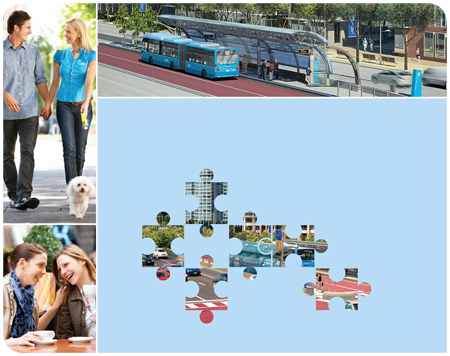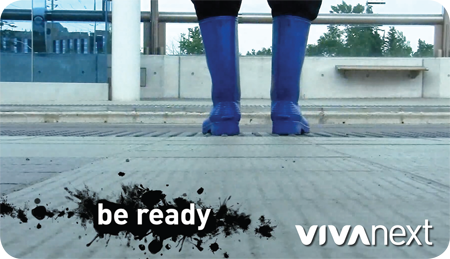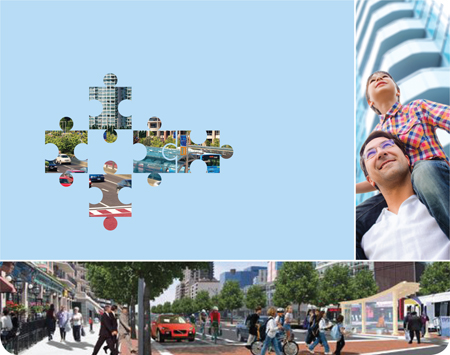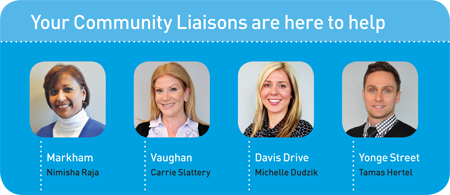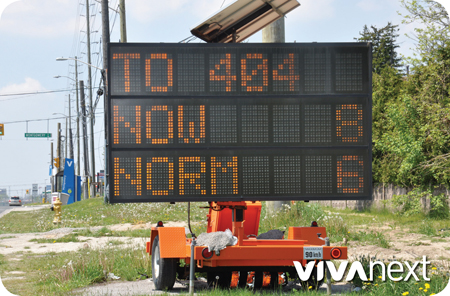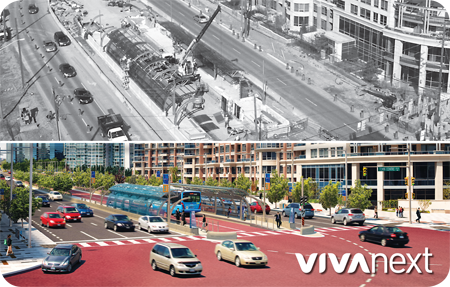The word rapidway is new to most people, but pretty soon it’s going to be a very familiar concept for people in York Region. We’ve had lots of interest from people wondering how exactly the rapidway on Highway 7 is going to work once it’s in service this year, and whether it will result in any changes for drivers, transit users and pedestrians. So to get you started, here’s a primer on some rapidway basics. Then for more detailed information, check out this blog over the upcoming days and weeks, for lots more information about what’s being built and how it’s going to benefit all of us.
- Who can actually drive in the rapidway?
- How will I know how to stay off the rapidway?
- How will I make a turn across the rapidway
- How will pedestrians get to the vivastations?
The rapidway will only be used by vivavehicles. YRT buses will continue to run in mixed traffic as they do now, and will continue to use their existing curbside stops. The exception is emergency vehicles; fire, ambulance, police, who may use the rapidways to help them through traffic.
Under no circumstances will cars or other vehicles ever use the rapidway. We’ll have signs at the beginning of the rapidway in each direction, making it very clear that non-viva vehicles must not enter.
We’ve made it easy to see where the rapidway begins, by paving the whole rapidway with distinctive bright red asphalt (see my blog in the next couple of weeks on red asphalt). It will be very obvious where the edges of the rapidway begin and end. To make it even more obvious, a rumble strip has been installed along the edges of the rapidway. Driving over the rumble strip will produce a loud noise if a driver begins to edge into the rapidway by mistake.
We’ve designed several features that will make it very clear where and when drivers can turn across the rapidway. (look for my blog in the next couple of weeks for more description of the new intersections and traffic signals). Left turns will only be allowed at intersections, which will have well-marked turning lines painted on them. The rapidways will have their own dedicated transit signals for viva drivers, which will be clearly marked and separate from the left turn signals for all other drivers. Lastly, there will be a protected left turn phase, meaning that drivers turning left (or making u-turns) will get a separate green arrow on its own phase, before through-traffic is allowed to move.
Every station is located adjacent to a signalized intersection, with a clearly marked crosswalk to make it easy to cross to the station in the median. Because Highway 7 with the rapidway lanes in the middle is now wider than it used to be, some pedestrians may want to cross the road in two stages, going to the median on the first stage, and then crossing to the other side on the second stage.
So that’s the most basic primer on how the rapidway will work, but I know people have many more questions. Over the next few weeks, I’m going to post an ongoing series of blogs on all the features of the new Highway 7 rapidway. But in the meantime, we want to know what you’d like more information on. Help us out by filling in your priority topics in this simple survey:
- [poll id=”43″]

